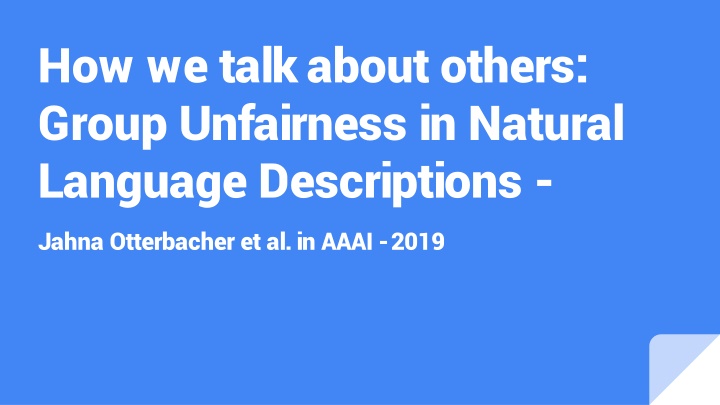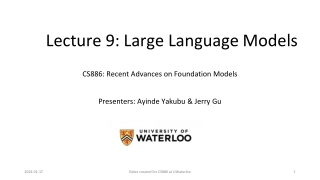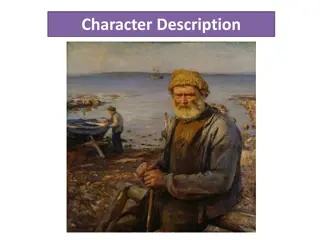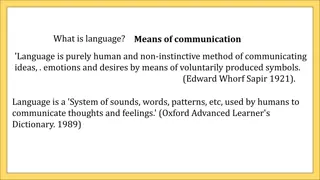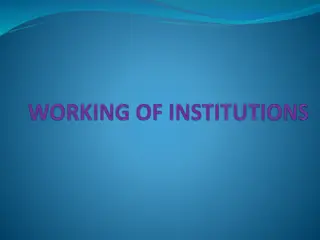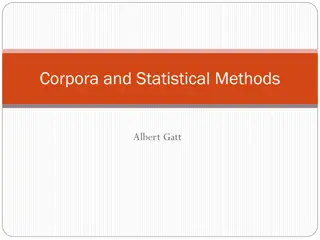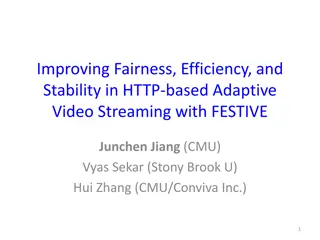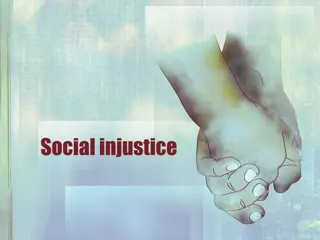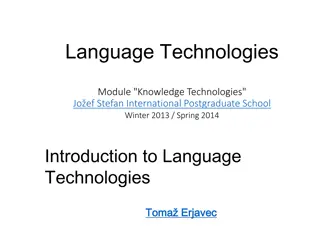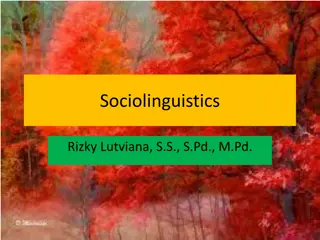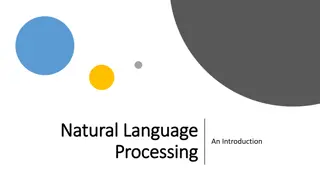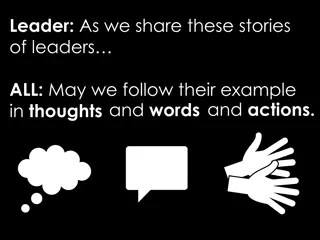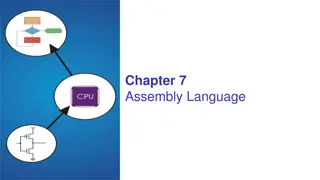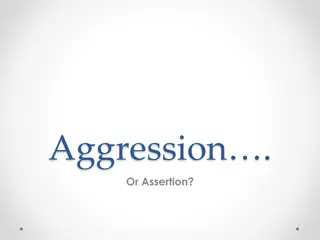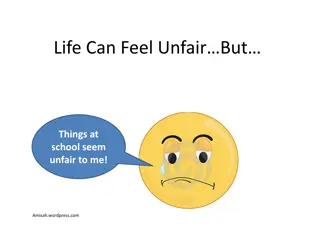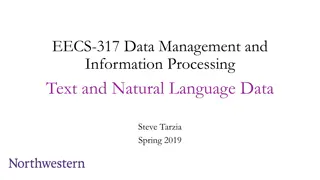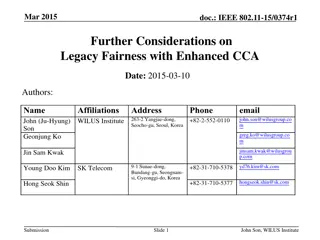Group Unfairness in Natural Language Descriptions: Understanding the Impact of Automatic Image Tagging
In the study on group unfairness in natural language descriptions, researchers examine how image tagging using abstract tags can introduce bias. They investigate the importance of image descriptions and the challenges in reporting accurate annotations to minimize biases. The pipeline for building image datasets and training models is crucial for generating automated descriptions, but the introduction of unfairness raises critical questions about ethics and representation.
Download Presentation

Please find below an Image/Link to download the presentation.
The content on the website is provided AS IS for your information and personal use only. It may not be sold, licensed, or shared on other websites without obtaining consent from the author.If you encounter any issues during the download, it is possible that the publisher has removed the file from their server.
You are allowed to download the files provided on this website for personal or commercial use, subject to the condition that they are used lawfully. All files are the property of their respective owners.
The content on the website is provided AS IS for your information and personal use only. It may not be sold, licensed, or shared on other websites without obtaining consent from the author.
E N D
Presentation Transcript
How we talk about others: Group Unfairness in Natural Language Descriptions - Jahna Otterbacher et al. in AAAI -2019
What is natural language description? Anything that uses regular day-to-day language to describe events or things. From something as simple as saying it s a sunny day today to something more complicated like an amazon review or a movie review. These days we have automatic models that can build sentences and predict ends of sentences using pretrained networks.
Example of NLD A bridge? A bridge by the sea? A wooden bridge by a blue sea and an island?
Why are image descriptions important? Image descriptions are crucial to accessibility research. People with visual or auditory impairments can have easier access to multimedia information such as images or audio files. Autonomous vehicles use image descriptions to tag items in their path for easier controlling. Identification of high value targets, prevention of human trafficking, and multiple other fields rely on image descriptions.
The basic image description pipeline It starts by building a dataset of images. Annotations are sourced from crowdsourcing platforms. Places like FigureEight or amazon s annotation services. Models are trained on annotated data. These models are capable of generating automated image descriptions for newer untested- unlabeled images
Image tagging doesnt only tag using observed or obvious tags. A lot of image tags are abstract-meaning they are annotated based on the annotator s choice, rather than a standard metric. Research has shown dangerous traits here. For instance, black men are more likely to be tagged with a negative emotion by classifiers as opposed to white people in Face++. Similarly commercial image taggers tag dark skinned people as less attractive. How or where does unfairness get introduced into the process?
When it comes to an image description or annotation, what should be reported? 1. Do we only report observed tags such as black/ white/ asian, boy/girl or do we delve more? 2. On one hand it can provide less bias, on the other it can take away descriptive image captioning techniques. Should sensitive words appear at the beginning of a sentence or towards the end? Are abstract tags used for in-group annotators more? What needs to be addressed?
Tagging an image based on what you feel rather than what you see. For instance tagging a serious looking person as a criminal or judgemental, or tagging a smiling person as funny. What are abstract tags? Abstract tags are like a double edged sword.
Research shows that people are almost immediately going to judge a person based on a picture. Even if this person is a stranger. This creates data which at its base is biased and this results in models trained on this data to be biased. Why problems keep arising? Popular state of the art corpuses like Stanford NLI has ethnic, racial, and gender stereotypes
Data was sourced from Chicago Face Database. An open source collection of headshot pictures of people with mixed ethnic, racial and gender backgrounds. Developed by university of Chicago for open source use by the scientific community. Method -part 1 - Gathering data
Example of Chicago Faces
Annotators were picked from India and USA since figure Eight has the largest pools there. Annotators were asked to specifically determine the content in each image One to two word phrases were allowed for a total of 10 labels for each picture. Annotating data
Sexy Handsome Non American Diligent Caring Serious Normal Personality Serious Olain Expression Sober Loaded Terms Words that can have biased connotations based on the annotator rather than the data.
Discriminatory discovery using datasets. Is race and gender of a person an influencing decision on the annotator? If so, how can we identify or debias it? Assessing Fairness
Group fairness holds, that advantaged and protected groups be treated in a similar manner. In classification tasks this can be understood as statistical parity, i.e. a minority group should be annotated/ treated/ and classified the same as a majority group. What is Group Fairness In real life, an example of this is the equal employment in USA.
Tags were classified into three major clusters. Demographics -Such as race/ gender Thematic Coding of Tags Concrete -black/ white/ asian Abstract -Beautiful/ judgemental
Proportion of tags by annotators Table shows proportion of all tags vs proportion of first tag in given sub clusters. Almost all cases had a concrete tag and more than 80% cases had a demographic tag. 50% cases also had abstract tags attached to them
Graphical representation of all tags Proportion of which tag corresponded to which sub-theme As we can see, most people mention abstract tags towards the end and start with demographic tags Concrete tags are highest
Seven types of comparisons are made. A tag which is used for describing an image of a white man (WM) is compared with seven other social groups. RQ -1 What is worth saying about people s images Asian woman/man, Latina/o, Black Man/Woman (AW/ AM/ LW/ LM/ BM/ BW) Worker tags are identified as IN or US. A logistic regression model is trained for each type of tag, which predicts that at least one such tag appears in a worker s description.
The previous table details, for each group, the proportion of descriptions that include at least one tag of a given type. Comparing the races and tags The last column talks of the pairwise comparison according to a tukey-test Qs = (Ya-Yb)/Error Qs is reported in the table.
Asian women workers are less likely to mention gender and age when describing them as compared to four other groups. Observations As the table also shows race related tags are more common for people who are black males or asians. Latin origin people are more prone to receive judgement tags
Knowing when what tags are used in descriptions are important. In a more unbiased description abstract tags would be seen towards the end. A usual image description would read out more concrete or observed tags. When are tags used? Only US based workers were used for this task.
Graph shows the proportion of US descriptions using a race tag
The graph according to the marginal probabilities, shows that race tags are more used early on, and reduce over time. It is also seen that Asian men and women are more likely to receive race based tags early on in the description as opposed to white, latinos, or black people. In fact after the sixth tag, we can see that more than half of the descriptions for Asian mention race, whereas, no other group reaches 50%.
US descriptions with abstract tags
In the previous graph we see when the race tags come into the picture. We see that by the last tag, every social group reaches over 50% abstract tags. Descriptions of white women have more abstract tags, though this is seen later on in the graph.
In theory it is predicted that similar races and genders, or more familiar people will have more abstract tags about each other. How much are in- group members described abstractly? Simply put, you re likely to describe people you can relate to with more judgemental comments than strangers. For this task white men and women are asked to describe in group members.
Descriptions by white women with an abstract tag
The previous graph shows the use of abstract tags by white women over the course of the task. We see a nearly linear trend for all eight social groups. We see that white women have the largest proportion of descriptions including an abstract tag (61%).
Descriptions by US- WM with an abstract tag
For white men we see that a deviation can be seen in case of white women and latin women. By the third tag, white men use more abstract tags for these groups. But by the 10th tag 82% of WW tags have abstract comments and LW women have 80%, this shows a cross-gender effect with WM being more inferential when describing WW.
Human centric annotations on people images contain a wealth of information beyond image content. This happens because people perceive others differently, based on their own unique characteristics or social relation to the target. Discussions However, if algorithms are trained on such biases it leads to unbiased, and problematic algorithms.
When annotating data, bias is always introduced. This may be confirmation bias, prejudice or other social factors at play. The order in which images are described play a vital role in creating algorithms. This study shows that later words in descriptions are more likely to be biased, or judgemental. Conclusions People are more likely to judge their own races or groups, and crowdsourcing needs to be more varied or more distributed for evennes.
